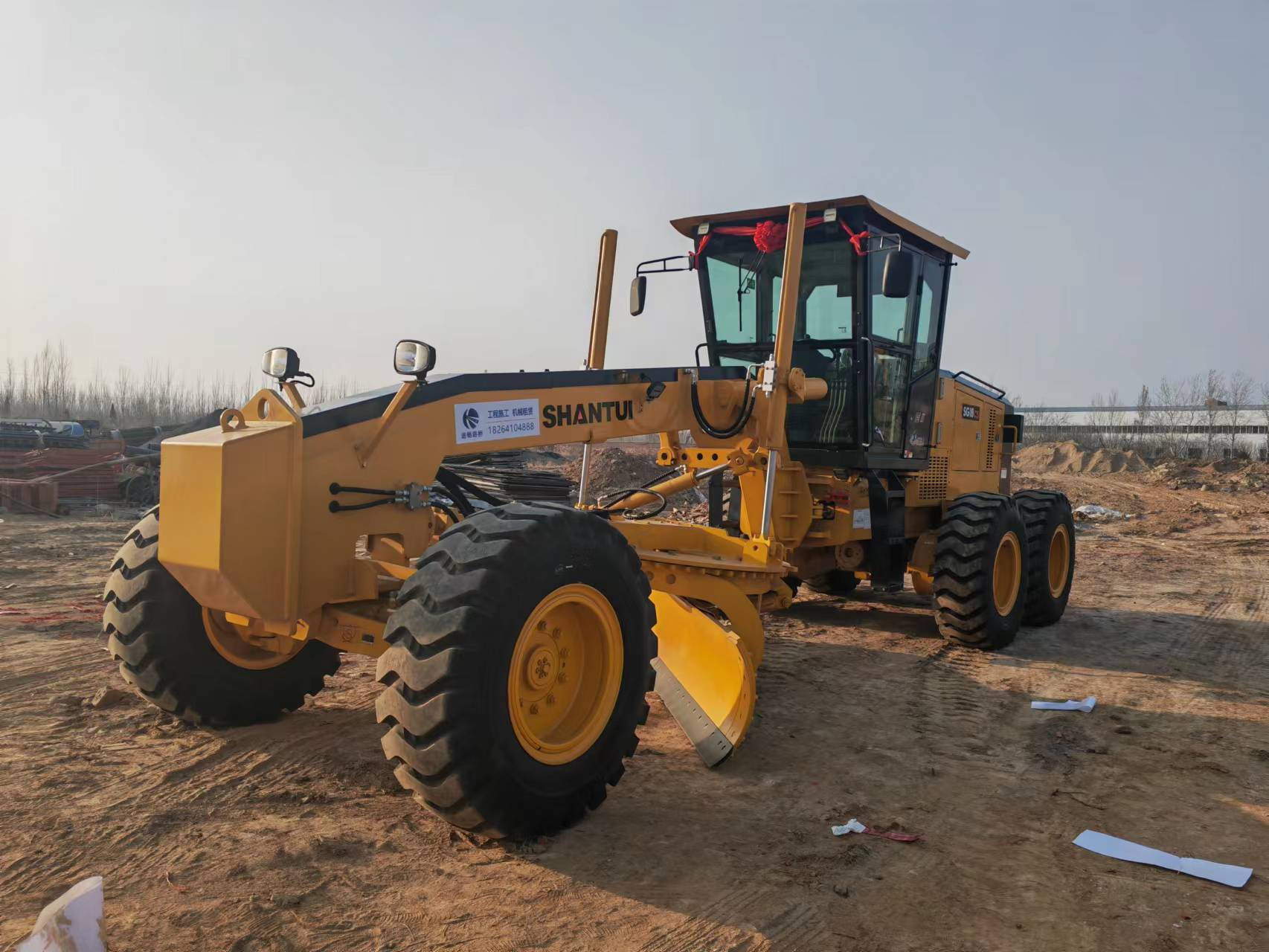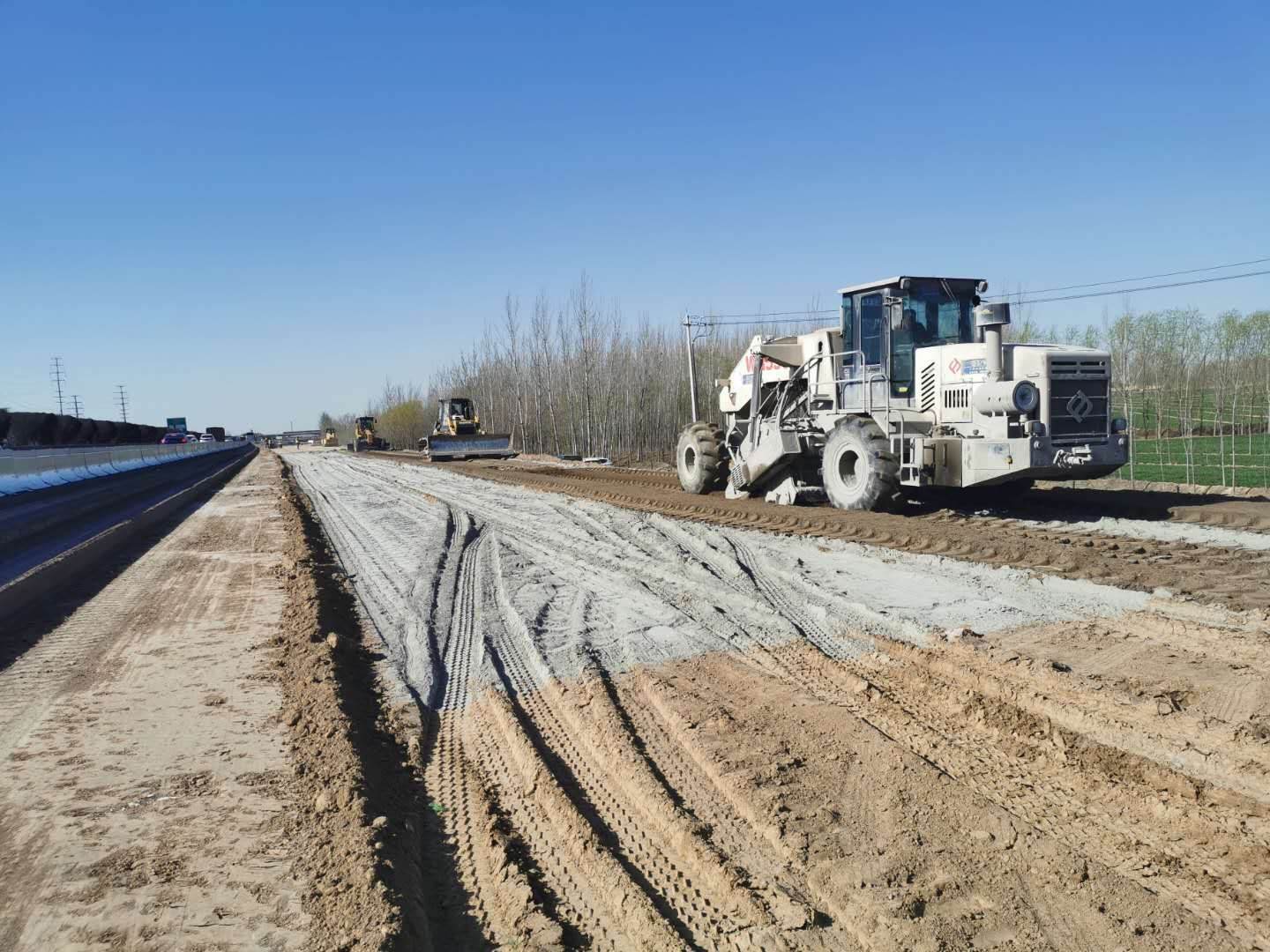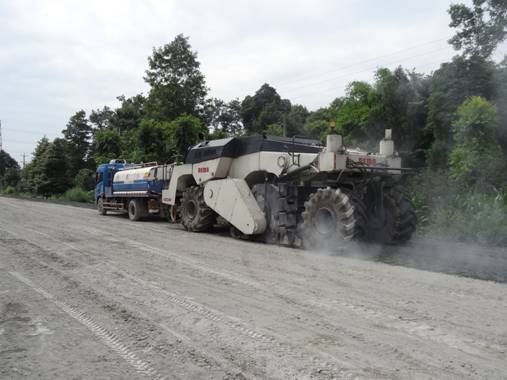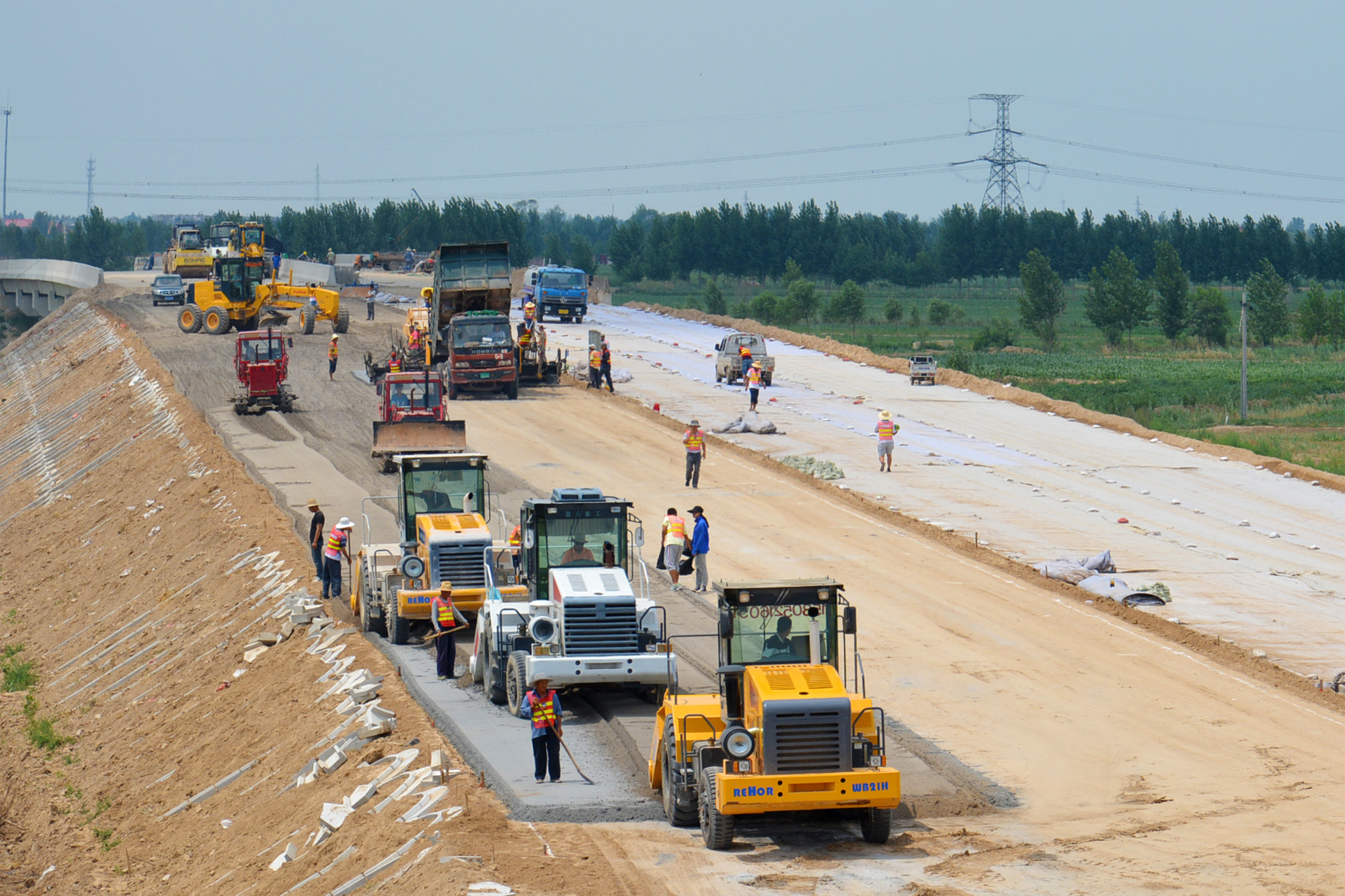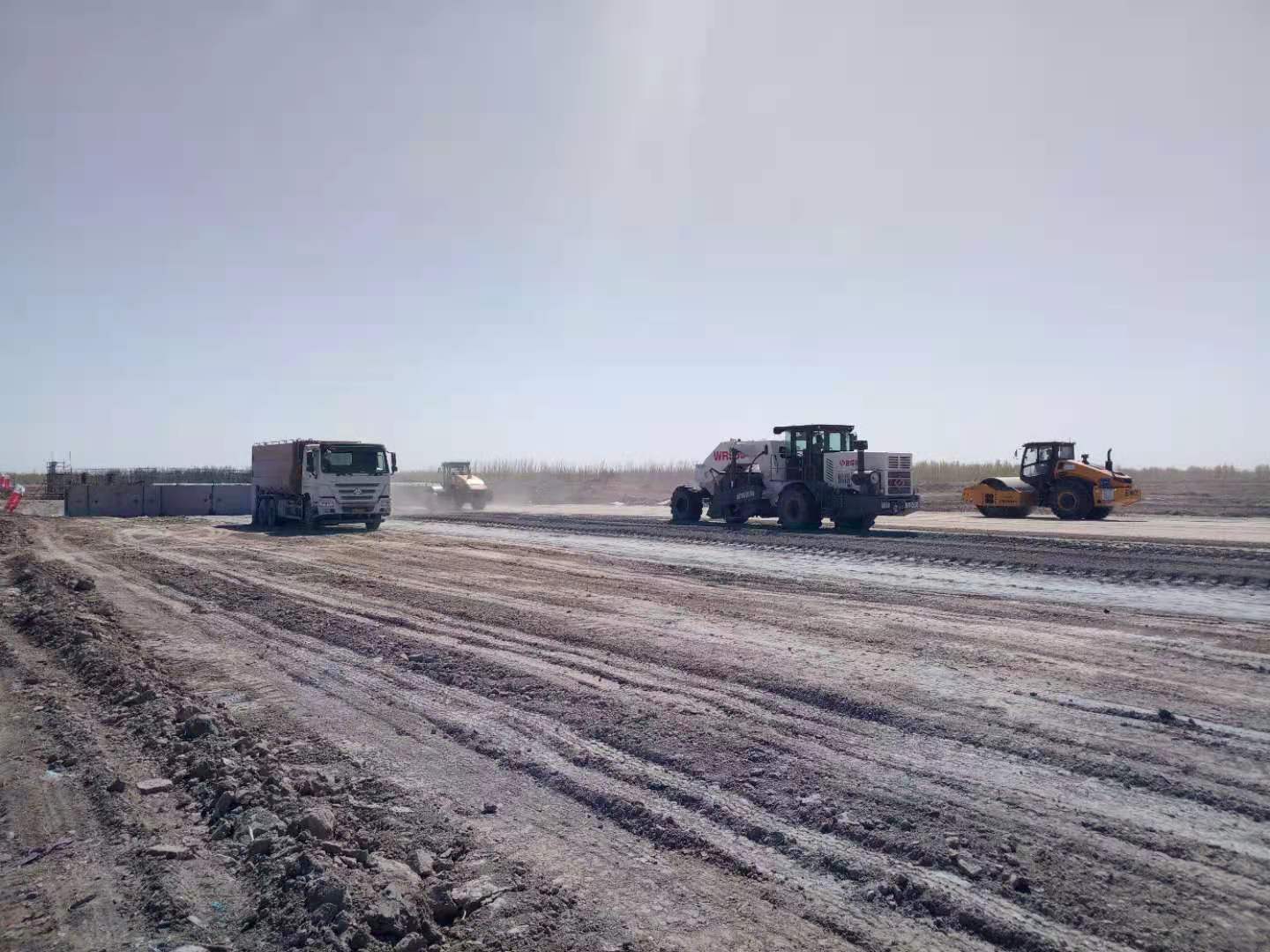
山东途畅路桥工程有限公司
联系人:石总
电话:18264104888
地址:山东省济南市槐荫区经一路273号群盛华城
冷再生机租赁:设备的操作规程
章 机械
Chapter 1 Machinery
维特根冷再生技术施工是由一系列机械组合而成的机组来完成的,机组中重要的就是再生机械的选择。维特根系列产品中有很多种机械可用于再生,决定采用哪种机械主要受工程规模和类型的影响。冷再生机械及配套设备的要求是有足够的生长能力并且处于良好的工作状态。下面介绍WR2500S型就地冷再生机在泡沫沥青就地冷再生施工过程中的机械配置和施工前的准备工作。
The construction of Wittgen cold recycling technology is completed by a series of mechanical units, and the most important part of the unit is the selection of recycling machinery. There are many types of machinery available for regeneration in the Wittgen series products, and the choice of which machinery to use is mainly influenced by the scale and type of the project. The minimum requirement for cold recycling machinery and supporting equipment is to have sufficient growth capacity and be in good working condition. The following describes the mechanical configuration of WR2500S on-site cold recycling machine during the construction of foam asphalt on-site cold recycling and the preparations before construction.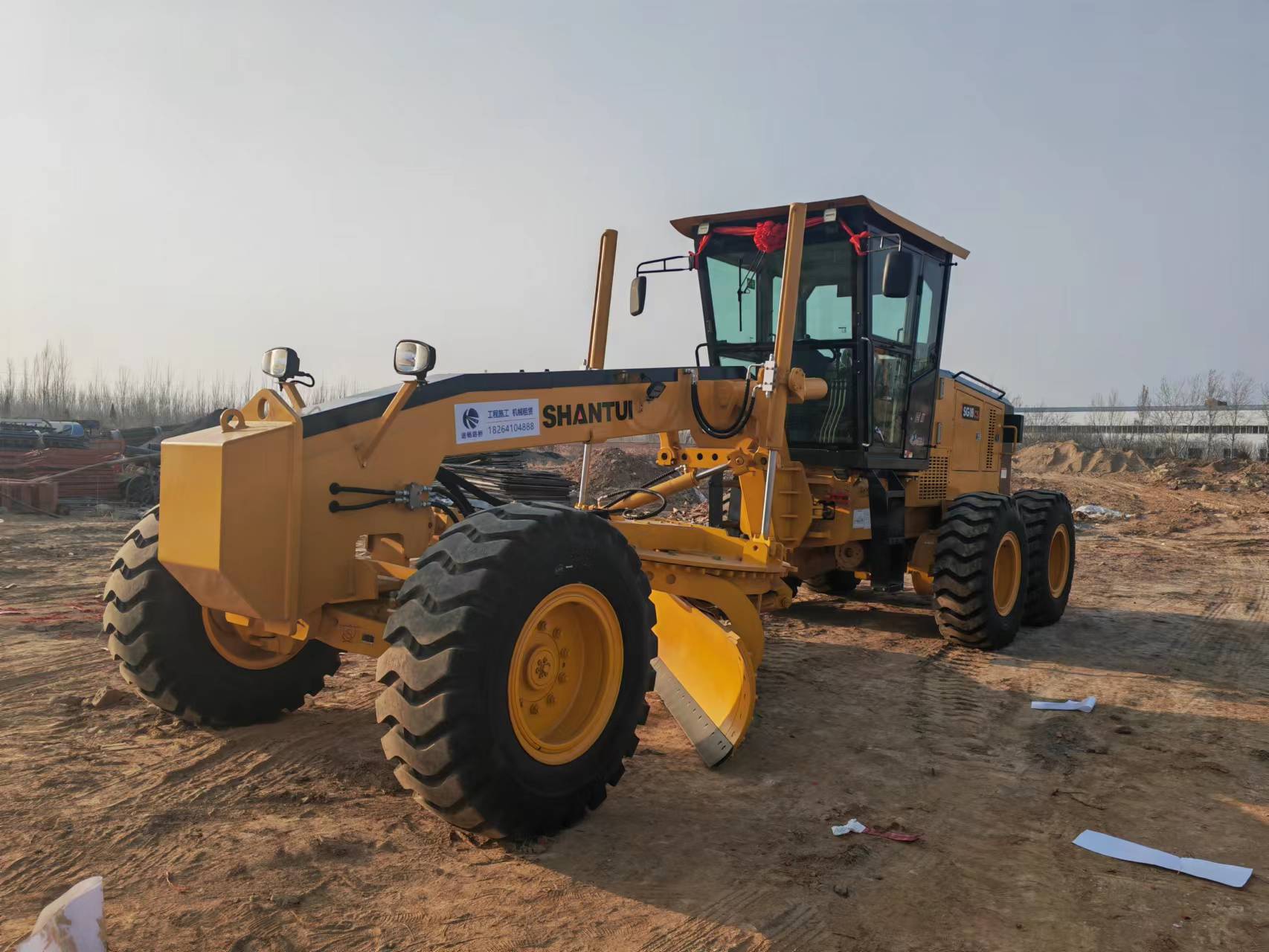
1.1 WR2500S就地再生机
1.1 WR2500S on-site regeneration machine
工作宽度:2438mm/3048mm
Working width: 2438mm/3048mm
工作深度:500mm
Working depth: 500mm
发动机功率:500kW/680HP
Engine power: 500kW/680HP
工作重量:ca.32t
Working weight: ca.32t
1.2 罐车
1.2 Tank trucks
罐车是再生机的配套设备,用来供水或者液体稳定剂。罐车的容量要与工程的规模和道路的几何形状匹配。在泡沫沥青就地冷再生施工过程中,要求两台罐车,一台是水罐车给再生机提供水;一台是沥青罐车给再生机提供制作泡沫沥青的沥青材料。
Tank trucks are supporting equipment for regeneration machines, used for supplying water or liquid stabilizers. The capacity of tank trucks should match the scale of the project and the geometric shape of the road. During the construction of on-site cold recycling of foam asphalt, two tankers are required, one of which is a water tanker to provide water for the recycling machine; One is asphalt tank truck, which provides asphalt materials for making foam asphalt for the regeneration machine.
1.3 压实设备
1.3 Compaction equipment
重型压路机对新再生层底部达到要求的压实度有重要作用,因而其选择非常关键。在应用WR2500S泡沫沥青就地冷再生机施工过程中需要三种不同的压路机。
The heavy-duty roller plays an important role in achieving the required compaction degree at the bottom of the new regeneration layer, so its selection is crucial. Three different types of rollers are required in the construction of WR2500S foam asphalt in place cold recycling machine.
1.3.1 双钢轮压路机
1.3.1 Double drum roller
双钢轮压路机的主要作用是初压,并且把表面的水分给封住,不让再生层水分流失过快。需要一台双钢轮压路机,可以选择自重20吨以上的压路机。
The main function of the double drum roller is to perform initial compaction and seal the surface water to prevent rapid loss of moisture in the regeneration layer. We need a double drum roller, and you can choose a roller with a self weight of 20 tons or more.
1.3.2 单钢轮压路机一台
1.3.2 One single steel wheel roller
重型压路机对新再生层底部达到要求的压实度有重要作用,因而其选择非常关键。在应用WR2500S就地泡沫沥青冷再生机施工过程中需要单钢轮压路机进行压实,数量1台-2台。泡沫沥青稳定再生结构层应用16t以上的单刚轮振动压路机结合胶轮压路机碾压,单刚轮振动压路机可以进行强弱振选择。使用的单刚轮振动压路机静重取决于再生层的厚度,可参照表1.1选择:
The heavy-duty roller plays an important role in achieving the required compaction degree at the bottom of the new regeneration layer, so its selection is crucial. During the construction of WR2500S on-site foam asphalt cold recycling machine, a single steel wheel roller is required for compaction, and the quantity is 1-2 sets. The foam asphalt stabilized and regenerated structural layer shall be rolled with a single rigid wheel vibratory roller of more than 16t combined with a rubber tyred roller, and the single rigid wheel vibratory roller can select strong and weak vibrations. The static weight of the single wheel vibratory roller used depends on the thickness of the regeneration layer, which can be selected according to Table 1.1:
表1.1 单刚轮振动压路机静重选择
Table 1.1 Static weight selection of single wheel vibratory roller
压实层厚度
Thickness of compacted layer
压路机静重(吨)
Static weight of roller (ton)
<150mm
<150mm
16
sixteen
150mm-200mm
150mm-200mm
20
twenty
200mm-250mm
200mm-250mm
22
twenty-two
>250mm
>250mm
25
twenty-five
1.3.3 胶轮压路机一台
1.3.3 One rubber roller
胶轮压路机主要是对泡沫沥青再生层表面进行揉搓,尽量让表面密实,减少水对再生层的不利影响。需要一台胶轮压路机,可以选择自重在20吨以上的压路机。
Rubber tyred roller is mainly used to rub the surface of foam asphalt regeneration layer to make the surface as dense as possible and reduce the adverse impact of water on the regeneration layer. We need a rubber tired roller, and you can choose a roller with a self weight of 20 tons or more.
1.4 平地机
1.4 Land leveler
由于WR2500S是轮胎式就地再生机,所以在施工过程中为了达到控制平整度和标高的要求,需要配备一台平地机。
Due to the fact that WR2500S is a tire type on-site regeneration machine, a grader is required during the construction process to meet the requirements of controlling flatness and elevation.
1.5 准备工作
1.5 Preparation work
再生机和配套设备准备好以后就要进行施工了,在正式施工之前还要对再生机组进行一下工作:
After the regeneration machine and supporting equipment are ready, construction needs to be carried out. Before formal construction, the following work needs to be done on the regeneration unit:
(1) 对再生施工中所需要的所有机械设备进行的检查;
(1) Conduct a comprehensive inspection of all mechanical equipment required for regeneration construction;
(2) 检查各罐车、再生机内所装水和/或稳定剂是否能满足再生路段施工的需要;
(2) Check whether the water and/or stabilizers installed in each tank truck and regeneration machine can meet the needs of the construction of the regeneration section;
(3) 在个作业面,采用推杆将再生机组排成一线;
(3) On the first working surface, use push rods to align the regeneration units in a straight line;
(4) 连接所有与再生机相连的管路,排出系统中的所有空气并确保所有阀门均处于全开度位置;
(4) Connect all pipelines connected to the regeneration machine, exhaust all air from the system, and ensure that all valves are in the fully open position;
(5) 检查再生机操作人员是否已将与稳定剂添加量有关的数据输入计算机。再生路段是否有明确的导向标志,所有开始程序是否均已清楚。
(5) Check if the operator of the regeneration machine has entered the data related to the amount of stabilizer added into the computer. Are there clear directional signs on the regeneration section, and are all starting procedures clear.
这些基础的准备工作快速而简单,并应成为每次施工开始前的例行工作。除再生机外,建议对所有辅助设备机械及设备的操作人员进行检查,以确定他们是否已经明白各自的责任,以及如何操作以确保再生施工的成功。
These basic preparations are quick and simple, and should become routine work before each construction begins. Except for the regeneration machine, it is recommended to inspect all auxiliary equipment machinery and equipment operators to determine whether they have understood their respective responsibilities and how to operate to ensure the success of the regeneration construction.
第二章 再生材料配合比设计
Chapter 2 Design of Recycled Material Mix Proportion
2.1 原材料试验
2.1 Raw material testing
在泡沫沥青稳定再生层施工前,需用对原就路面进行取样。可以利用WR2500S就地冷再生机在原旧路上铣刨有代表性的样品。用再生机进行取样,不仅能够获得有关结构层次和路面材料有用的视觉理解,而且提供了提取样品进行试验室测试的机会。通过这些样品,可对原路面结构层的材料质量进行评价,同时这些样品也可以用于配合比设计,测试结构将有助于确定路面材料有效的再生处理方式。
Before the construction of foam asphalt stabilized regeneration layer, the original pavement shall be sampled. Representative samples can be milled on the original road using the WR2500S on-site cold recycling machine. Using a recycling machine for sampling not only provides useful visual understanding of structural hierarchy and pavement materials, but also offers the opportunity to extract samples for laboratory testing. Through these samples, the material quality of the original pavement structure layer can be evaluated, and these samples can also be used for mix design. Testing the structure will help determine the most effective recycling method for pavement materials.
2.1.1 选取的铣刨料样品应严格按照相关规范和规程进行下列试验:
2.1.1 The selected milling material samples should undergo the following tests strictly in accordance with relevant specifications and regulations:
2.1.2 对级配不良的铣刨旧料,应通过掺加部分新料以改善其级配,对新加料应取所定料场中有代表性的样品严格按照相关规范和规程进行下列试验:
2.1.2 For milling old materials with poor grading, the grading should be improved by adding some new materials. Representative samples from the designated material yard should be taken for the new materials, and the following tests should be strictly conducted in accordance with relevant specifications and regulations:
(1)级配分析;
(1) Grading analysis;
(2)塑性指数;
(2) Plasticity index;
(3)相对密度;
(3) Relative density;
(4)碎石或砾石的压碎值;
(4) Crushing value of crushed stone or gravel;
(5)含水量;
(5) Water content;
2.1.3 应检验水泥的标号和终凝时间。
2.1.3 The grade and final setting time of cement should be inspected.
2.2 材料要求
2.2 Material Requirements
2.2.1 泡沫沥青就地稳定再生中的待稳定材料应满足如下要求:
2.2.1 The materials to be stabilized during in-situ stabilization and regeneration of foam asphalt shall meet the following requirements:
泡沫沥青稳定再生层单个颗粒的粒径不应超过31.5mm。泡沫沥青稳定再生层的颗粒组成应在表2.1所列级配范围内。待稳定材料的塑性指数不应超过10。塑性指数大于10的待稳定材料,宜加入石灰,或加入水泥和石灰的混合活性填料。
The maximum particle size of a single particle of foam asphalt stabilized regeneration layer shall not exceed 31.5mm. The particle composition of foam asphalt stabilized regeneration layer shall be within the grading range listed in Table 2.1. The plasticity index of the material to be stabilized should not exceed 10. For materials with a plasticity index greater than 10 that need to be stabilized, lime or a mixture of cement and lime as active fillers should be added.
2.2.2 在25℃稳定材料时,要求用来发泡的基质沥青的膨胀率和半率期小接受值分别为10倍和8秒,不满足此要求的沥青应放弃使用。
2.2.2 When stabilizing materials at 25 ℃, the minimum acceptable values for the expansion rate and half cycle of the matrix asphalt used for foaming are 10 times and 8 seconds, respectively. Asphalt that does not meet this requirement should be discarded.
2.2.3 使用的粗细集料质量要求应满足《公路沥青路面施工技术规范》(JTGF40)的规定。单一粗细集料质量要求不能满足要求,但是集料混合料性能满足要求的,可以使用。
The quality requirements for the coarse and fine aggregates used in 2.2.3 shall meet the provisions of the "Technical Specification for Construction of Asphalt Pavement on Highways" (JTGF40). If the quality requirements of a single coarse and fine aggregate cannot be met, but the performance of the aggregate mixture meets the requirements, it can be used.
2.2.4 水泥作为再生活性填料时,可以采用普通硅酸盐水泥、矿渣硅酸盐水泥、火山灰硅酸盐水泥。水泥的初凝时间3h以上和终凝时间较长(宜在6h以上)的水泥,不应使用快硬水泥、早强水泥以及已受潮变质的水泥。水泥应疏松、干燥、无聚团、结块、受潮变质。水泥标号可以为32.5或42.5。
2.2.4 When cement is used as a regenerated active filler, ordinary Portland cement, slag Portland cement, and volcanic ash Portland cement can be used. Cement with an initial setting time of more than 3 hours and a final setting time of more than 6 hours (preferably more than 6 hours) should not use fast hardening cement, early strength cement, or cement that has been affected by moisture and deteriorated. Cement should be loose, dry, free from agglomeration, clumping, moisture and deterioration. The cement grade can be 32.5 or 42.5.
2.2.5 石灰作为再生活性填料时,可以采用消石灰粉或者生石灰粉,石灰技术指标应符合《公路路面基层施工技术规范》的规定。石灰在野外堆放时间较长时应覆盖防潮。。
2.2.5 When lime is used as a regenerated active filler, hydrated lime powder or quicklime powder can be used, and the technical indicators of lime should comply with the provisions of the "Technical Specification for Construction of Highway Pavement Base". When lime is stored in the field for a long time, it should be covered to prevent moisture..
2.2.6 应采用洁净水用于泡沫沥青稳定再生施工。对水质有疑问时应进行检验。
2.2.6 Clean water shall be used for foam asphalt stable regeneration construction. When there are doubts about water quality, testing should be conducted.
2.3 准备试样并进行配合比设计
2.3 Prepare samples and conduct mix design
2.3.1 在进行配合比设计的时候,要进行基质沥青的基本指标检测和发泡性能检测。沥青的基本指标检测要求如下:
2.3.1 When designing the mix proportion, the basic indicators and foaming performance of the base asphalt should be tested first. The basic indicator testing requirements for asphalt are as follows:
2.3.2 沥青基本指标检测完成以后就可以进行发泡特性的确定了。步骤如下:
After the basic indicators of asphalt are tested, the foaming characteristics can be determined. The steps are as follows:
(1)沥青发泡温度通常选择160℃、170℃、180℃三个温度;
(1) The foaming temperature of asphalt is usually selected at three temperatures: 160 ℃, 170 ℃, and 180 ℃;
(2)发泡用水量少为4个,通常为沥青质量的1%、2%、3%、4%;
(2) The foaming water consumption should be at least 4, usually 1%, 2%, 3%, and 4% of the asphalt mass;
(3)将试验机中泵送循环的沥青加热需要的温度,并在开始试验前少维持5分钟;
(3) Heat the asphalt pumped and circulated in the testing machine to the required temperature and maintain it for at least 5 minutes before starting the test;
(4)标定沥青的喷射流量,并设置计时器,使每次沥青的喷射量为500g;
(4) Calibrate the spraying flow rate of asphalt and set a timer to ensure that the spraying amount of asphalt each time is 500g;
(5)设定水流量控制器,达到需要的加水量;
(5) Set the water flow controller to achieve the required amount of water added;
(6)将泡沫沥青喷射钢桶内(钢桶直径275mm),使用试验机配备的标尺,测量桶内泡沫沥青的高度,作为体积;
(6) Spray foam asphalt into the steel drum (diameter of the steel drum is 275mm), and use the ruler equipped with the testing machine to measure the maximum height of foam asphalt in the drum as the maximum volume;
(7)使用秒表测量泡沫沥青衰落体积的一半所持续的时间,作为泡沫沥青的半衰期;
(7) Use a stopwatch to measure the duration of foam asphalt fading to half of the maximum volume as the half-life of foam asphalt;
(8)少重复三次,直到得到每次体积和半衰期的读书相似;
(8) Repeat at least three times until the maximum volume and half-life of each reading are similar;
(9)对每个温度,少在3个含水量下,重复步骤5-8;
(9) For each temperature, repeat steps 5-8 at least for 3 moisture contents;
(10)以含水量(%)为横坐标,膨胀率(倍数)和半衰期(S)为左右纵坐标,根据试验数据绘图,选择能产生发泡效果的发泡温度和发泡用水量。
(10) Using water content (%) as the horizontal axis, expansion rate (multiple) and half-life (S) as the left and right vertical axes, plot the experimental data and select the foaming temperature and water consumption that can produce the best foaming effect.
2.3.3 将代表试样(旧混合料)完全风干,测定旧混合料完全风干后的含水量。
2.3.3 Fully air dry the representative sample (old mixture) and measure the moisture content of the old mixture after complete air drying.
2.3.4 根据旧混合料和新加料的级配确定合成级配,级配范围如表2.1。绘制级配曲线,使设计合成级配在相应的级配范围内。设计的合成级配宜接近表中级配范围的中值。当反复调整不能满意时,应更换新加料设计。
2.3.4 Determine the composite gradation based on the gradation of the old mixture and the newly added material, and the gradation range is shown in Table 2.1. Draw a grading curve to ensure that the designed composite grading falls within the corresponding grading range. The designed composite gradation should be close to the median of the gradation range in the table. When repeated adjustments are unsatisfactory, a new feeding design should be replaced.
2.3.5 将旧混合料分成以下四个部分:
2.3.5 Divide the old mixture into the following four parts:
(1)粒径大于31.5mm的材料;
(1) Materials with a particle size greater than 31.5mm;
(2)粒径在19~31.5mm之间的材料;
(2) Materials with particle sizes between 19-31.5mm;
(3)粒径在13.2~19mm之间的材料;
(3) Materials with particle sizes between 13.2-19mm;
(4)粒径在4.75~13.2mm之间的材料;
(4) Materials with particle sizes ranging from 4.75mm to 13.2mm;
(5)小于4.75mm的材料。
(5) Materials smaller than 4.75mm.
2.3.6 将全部通过31.5mm的材料,再按照筛分结果重新组合成代表性试样,并用19~31.5mm这档材料代替31.5mm以上的材料。符合粗粒式级配的试样举例见表2.2。
2.3.6 Combine all materials passing through 31.5mm according to the screening results to form representative samples, and replace materials above 31.5mm with materials ranging from 19-31.5mm. Examples of samples that meet the coarse-grained grading are shown in Table 2.2.
表2.2 代表试样重新组合
Table 2.2 represents the recombination of samples
筛分结果 10kg旧混合料各档材料用量
Screening results show the amount of materials used for each grade of 10kg old mixture
筛孔尺寸(mm) 通过率(%) <4.75mm 4.75~13.2mm 13.2~19mm 19~31.5mm
Sieve size (mm) Passing rate (%)<4.75mm 4.75~13.2mm 13.2~19mm 19~31.5mm
31.5 97.5 (53.6/100×10000)=5360g (72.3-53.6)/100×10000=1870g (85.5-72.3)/100×10000=1320g (100-85.5)/100×10000=1450g
31.5 97.5 (53.6/100×10000)=5360g (72.3-53.6)/100×10000=1870g (85.5-72.3)/100×10000=1320g (100-85.5)/100×10000=1450g
19.0 85.5
19.0 85.5
13.2 72.3
13.2 72.3
4.75 53.6
4.75 53.6
2.4 干密度和含水量的确定
2.4 Determination of maximum dry density and optimal moisture content
2.4.1 泡沫沥青稳定基层时添加少量的水泥或者石灰与泡沫沥青配合使用。在施工中普遍使用水泥材料。在配制试样时,水泥剂量为1.5%。水泥剂量以水泥质量占全部材料干质量的百分率表示,即水泥剂量=水泥质量/(水泥质量+待稳定旧料干质量)。
2.4.1 When stabilizing the base with foam asphalt, add a small amount of cement or lime and use it together with foam asphalt. Cement materials are commonly used in construction. When preparing the sample, the cement dosage is 1.5%. The cement dosage is expressed as the percentage of cement mass to the total dry mass of the material, that is, cement dosage=cement mass/(cement mass+dry mass of the old material to be stabilized).
2.4.2 根据设计配合比确定的新旧料比例进行配料,配料时>31.5mm的材料进行替代。
2.4.2 According to the design mix proportion, determine the ratio of new and old materials for batching, and replace materials with a size greater than 31.5mm during batching.
2.4.3 按公式2.4.1确定试样的干质量。
2.4.3 Determine the dry mass of the sample according to formula 2.4.1.
(2.4.1)
(2.4.1)
式中:
Where:
――试样的干质量,g;
The dry mass of the sample, g;
――试样的风干质量,g;
The air dried quality of the sample, g;
――风干试样的含水量,%。
Moisture content of air dried samples,%.
2.4.4 按公式2.4.2确定稳定剂的用量。
2.4.4 Determine the dosage of stabilizer according to formula 2.4.2.
/ (2.4.2)
/ (2.4.2)
式中:
Where:
――水泥用量,g;
-- Cement dosage, g;
――水泥的百分比,%;
- Percentage of cement,%;
――试样的干质量百分比,%;
Dry mass percentage of the sample,%;
2.4.5 按照《公路工程无机结合料稳定材料试验规程》(JTJ 057-94)T0804-94方法确定混合料的干密度和含水量。
2.4.5 Determine the maximum dry density and optimal moisture content of the mixture according to the T0804-94 method in the "Test Code for Inorganic Bonding Materials in Highway Engineering" (JTJ 057-94).
2.5 稳定材料的准备
2.5 Preparation of Stable Materials
(1)将要求数量的材料放置到合适的拌缸内;
(1) Place the required quantity of materials into a suitable mixing tank;
(2)根据2.4.1式计算试样干质量;
(2) Calculate the dry mass of the sample according to equation 2.4.1;
(3)根据2.4.2式计算活性填料用量;
(3) Calculate the amount of active filler according to equation 2.4.2;
(4)按2.5.1式计算确定适宜拌合用水量,按公式2.5.2去定试样中所需的加水质量;
(4) Calculate the most suitable mixing water amount according to formula 2.5.1, and determine the required amount of water to be added to the sample according to formula 2.5.2;
W (2.5.1)
W (2.5.1)
( + ) (2.5.2)
( + ) (2.5.2)
――试样的加水质量,g;
The quality of water added to the sample, g;
――需要加入的石灰或者水泥质量,g;
The quality of lime or cement that needs to be added, g;
――含水量,%。
- Optimal moisture content,%.
――试样的干质量,g;
The dry mass of the sample, g;
――风干试样的含水量,%;
Moisture content of air dried samples,%;
――需要加入试样中的含水量,%。
The water content needs to be added to the sample,%.
(5)将试样材料、活性填料、水在拌缸内一起拌合均匀;
(5) Mix the sample material, active filler, and water together in the mixing tank until they are evenly mixed;
(6)按公式2.5.3确定泡沫沥青用量。(沥青用量一般选择1.5%、2%、2.5%、3%、3.5%)
(6) Determine the amount of foam asphalt according to Formula 2.5.3. (Asphalt usage is generally selected as 1.5%, 2%, 2.5%, 3%, 3.5%)
( + ) (2.5.3)
( + ) (2.5.3)
――需要加入的泡沫质量,g;
-- The quality of foam to be added, g;
――泡沫沥青含量,%。
―― foam asphalt content,%.
――试样的干质量,g;
The dry mass of the sample, g;
――需要加入的石灰或水泥量,g;
The amount of lime or cement that needs to be added, g;
(7)按公式2.5.4确定泡沫沥青试验机的喷入时间;
(7) Determine the injection time of foam asphalt tester according to formula 2.5.4;
( + ) (2.5.4)
( + ) (2.5.4)
――试验机上计时器设定的时间,s;
The time set by the timer on the testing machine, s;
――需要添加的泡沫沥青质量,g;
―― The quality of foam asphalt to be added, g;
――试验机上的沥青流量,g/s;
The asphalt flow rate on the testing machine, g/s;
―拌缸内损失沥青的补偿系数,根据经验取1.25;
The compensation coefficient for asphalt loss in the mixing tank is taken as 1.25 based on experience;
(8)将机械式拌合机与发泡设备对接在一起,以便泡沫沥青可直接喷入拌锅中;
(8) Dock the mechanical mixer with the foaming equipment so that foam asphalt can be directly sprayed into the mixing pot;
(9)开启搅拌机,在向拌锅内喷射泡沫沥青之前少拌合10秒,并在喷射泡沫沥青后持续拌合30秒;
(9) Start the mixer, mix for at least 10 seconds before spraying foam asphalt into the mixing pot, and continue mixing for 30 seconds after spraying foam asphalt;
(10)将拌制好的泡沫沥青稳定材料转移容器内并立即密封,以防止水分损失;
(10) Transfer the mixed foam asphalt stabilized material to the container and seal it immediately to prevent water loss;
(11)按照下述步骤立即成型试件,少制作4种不同泡沫沥青含量的试件。
(11) Immediately shape the test piece according to the following steps, and make at least 4 test pieces with different foam asphalt content.
2.6 成型试件(击实成型)
2.6 Molding test piece (compaction molding)
2.6.1 按合成级配中旧沥青路面铣刨料、水泥的掺加比例,将各部分混合拌匀,按重型击实试验确定的含水量的65%对应的水量,加入到混合混合料中进行拌和,然后分别加入四种泡沫沥青用量:1.5%、2.0%、2.5%、3.0%,与混合集料进行拌和;
2.6.1 Mix all parts evenly according to the mixing proportion of old asphalt pavement milling material and cement in the composite grading, add the water corresponding to 65% of the optimal water content determined by the heavy compaction test to the mixed mixture for mixing, and then add four kinds of foam asphalt: 1.5%, 2.0%, 2.5%, 3.0% respectively to mix with the mixed aggregate;
2.6.2 拌和好的混合料以马歇尔法双面各击实75次成型试件;
2.6.2 The mixed material is compacted 75 times on both sides using the Marshall method to form the specimen;
2.6.3 在室温下放置24h后,放入40℃通风烘箱养生72小时。养生后的马歇尔试件分为干湿两组,一组直接浸泡于25℃水浴中24小时后进行间接拉伸试验(ITSs),另一组放入25℃烘箱中保温1~2小时后进行间接拉伸试验(ITS g);残留劈裂强度试验按照《公路工程沥青及沥青混合料试验规程》(JTJ052-2000)中T0716-1993方法进行试验。
2.6.3 After being left at room temperature for 24 hours, place it in a 40 ℃ ventilated oven for 72 hours of curing. The Marshall specimens after health preservation were divided into two groups: dry and wet. One group was directly immersed in a 25 ℃ water bath for 24 hours and subjected to indirect tensile testing (ITSs), while the other group was placed in a 25 ℃ oven for 1-2 hours and subjected to indirect tensile testing (ITS g); The residual splitting strength test shall be conducted according to the T0716-1993 method in the "Test Code for Asphalt and Asphalt Mixtures in Highway Engineering" (JTJ052-2000).
2.6.4 由两组试件劈裂试验结果可得到残留劈裂强度比(TSR),残留强度比=浸水试件的劈裂强度/未浸水试件的劈裂强度*100。
2.6.4 The residual splitting strength ratio (TSR) can be obtained from the splitting test results of two sets of specimens, where TSR=splitting strength of immersed specimens/splitting strength of non immersed specimens * 100.
表2.3 泡沫沥青再生混合料技术标准
Table 2.3 Technical Standards for foam Asphalt Recycled Mixture
试验项目 技术要求
Technical requirements for experimental projects
劈裂试验(15℃) 劈裂强度MPa 不小于 0.4(基层,底基层) 0.5(下面层)
Splitting test (15 ℃) Splitting strength MPa not less than 0.4 (base layer, sub base layer) 0.5 (lower layer)
干湿劈裂强度比% 不小于 75
Dry wet splitting strength ratio% not less than 75
马歇尔稳定度试验(40℃) 马歇尔稳定度KN 不小于 5.0(基层,底基层) 6.0(下面层)
Marshall stability test (40 ℃) Marshall stability KN not less than 5.0 (base layer, sub base layer) 6.0 (lower layer)
浸水马歇尔残留稳定度% 不小于 75
Immersion Marshall residual stability% not less than 75
冻融劈裂强度比TSR% 不小于 70
The freeze-thaw splitting strength ratio TSR% shall not be less than 70
注:任选劈裂试验和马歇尔试验之一作为设计要求,使用劈裂试样。
Note: Choose one of the splitting test and Marshall test as the design requirement, and it is recommended to use splitting specimens.
2.7 确定稳定剂的用量
2.7 Determine the optimal dosage of stabilizer
2.7.1 根据各沥青用量下的干、湿劈裂强度以及残留强度比综合确定泡沫沥青用量,技术标准见表2.3。
2.7.1 Determine the optimal amount of foam asphalt according to the dry and wet splitting strength and residual strength ratio of each asphalt amount. See Table 2.3 for technical standards.
第三章 试验段施工
Chapter 3 Construction of Experimental Section
3.1 泡沫沥青稳定再生结构层施工期的日气温应在10℃以上。
3.1 The daily minimum temperature of foam asphalt stabilized and regenerated structural layer during construction shall be above 10 ℃.
3.2 按要求选定试验段。
3.2 Select the test section as required.
3.3 根据经验和所用再生机械的特点,制定3~5种不同的再生机行进速度和转子速度的组合方案,按设计的再生深度对旧路进行铣刨,取铣刨后具有代表性的材料送往试验室进行筛分,选择级配接近理想级配的方案作为施工时再生机行进速度和转子速度的方案。
3.3 Based on experience and the characteristics of the recycling machinery used, develop 3-5 different combinations of recycling machine travel speed and rotor speed, mill the old road according to the designed recycling depth, take representative materials after milling and send them to the laboratory for screening, and select the scheme with the closest gradation to the ideal gradation as the scheme for recycling machine travel speed and rotor speed during construction.
3.4 按照3.2确定的再生机行进速度和转子速度,根据再生深度对旧路铣刨,取铣刨后具有代表性的材料样品送往试验室进行室内配合比设计。
3.4 According to the determined travel speed and rotor speed of the regeneration machine in 3.2, mill the old road based on the regeneration depth, and take representative material samples after milling and send them to the laboratory for indoor mix design.
3.5 按照室内试验结果,在旧路上摊铺新加料或/和填料,但不添加稳定剂,按3.2确定的方案进行铣刨,取铣刨后具有代表性的材料样品送往试验室进行筛分,如果筛分后的级配与室内设计级配超过工地允许波动范围,应调整再生机速度和转子速度,使铣刨后的级配与室内设计级配相比波动在允许范围内。
3.5 According to the indoor test results, new materials or/and fillers shall be spread on the old road without adding stabilizers. Milling shall be carried out according to the scheme determined in 3.2. Representative material samples after milling shall be taken and sent to the laboratory for screening. If the screened gradation exceeds the allowable fluctuation range of the construction site compared to the indoor design gradation, the speed of the regeneration machine and rotor shall be adjusted to ensure that the milled gradation fluctuates within the allowable range compared to the indoor design gradation.
3.6 根据稳定剂类型,按照本指南相应章节进行严格施工,采用1~3种压实方案进行施工(包括压路机吨位、碾压顺序、遍数等),以确定为合理的碾压方案。
3.6 According to the type of stabilizer, strict construction shall be carried out in accordance with the corresponding chapters of this guide, using 1-3 compaction schemes (including roller tonnage, rolling sequence, number of passes, etc.) to determine the most reasonable compaction scheme.
3.7 取再生机后经铣刨、拌和的混合料,送往试验室,对以泡沫沥青作为稳定剂的冷再生,测定再生混合料的含水量、干密度,并成型试件,测定其干湿劈裂强度。
3.7 Take the mixture milled and mixed after the recycling machine and send it to the laboratory. For the cold recycling with foam asphalt as the stabilizer, measure the moisture content and maximum dry density of the recycled mixture, shape the test piece and measure its wet and dry splitting strength.
3.8 对试验段的弯沉、压实度、平整度、厚度、宽度等指标进行检测。
3.8 Test the deflection, compaction, flatness, thickness, width and other indicators of the test section.
3.9 根据试验段的结果终确定再生混合料的级配、施工时采用的再生机行进速度、转子速度及再生结构压实工艺。
3.9 Based on the results of the test section, the final grading of the recycled mixture, the speed of the recycling machine used during construction, the rotor speed, and the compaction process of the recycling structure shall be determined.
第四章 泡沫沥青就地冷再生施工
Chapter IV On site Cold Recycling of foam Asphalt
4.1 就地冷再生的工艺流程宜按图4.1的顺序
The process flow of on-site cold regeneration should follow the sequence in Figure 4.1
4.1.1 封闭交通
4.1.1 Closed Traffic
4.1.1.1 在准备原路面的前一周,应在再生路段各路口设置表示牌,提醒司机及行人封闭交通的时间。
4.1.1.1 One week before preparing the original road surface, signs should be set up at each intersection of the reclaimed road section to remind drivers and pedestrians of the time of traffic closure.
4.1 泡沫沥青稳定就地冷再生工艺流程图
4.1 Process flow chart of foam asphalt stable in place cold regeneration
4.1.1.2 开始准备原路面时,完全封闭交通,禁止一切车辆通行。
4.1.1.2 When preparing the original road surface, completely close off traffic and prohibit all vehicles from passing.
4.1.1.3 整个施工及养护过程中,对再生路段要完全封闭交通。
During the entire construction and maintenance process, the regenerated road section should be completely closed off from traffic.
4.1.1.4 未进行再生路段应设置警示牌,提醒司机及行人。
4.1.1.4 Warning signs should be set up on sections that have not undergone regeneration to alert drivers and pedestrians.
4.1.2 准备原道路
4.1.2 Prepare the original road
4.1.2.1 原道路表面(包括不需要再生的相临行车道和路肩)的石块、垃圾、杂草等杂物。
4.1.2.1 Remove stones, garbage, weeds, and other debris from the original road surface (including adjacent lanes and shoulders that do not require regeneration).
4.1.2.2 积水。
4.1.2.2 Remove accumulated water.
4.1.2.3 再生路段上存在的井盖等类似结构物。
4.1.2.3 Remove manhole covers and similar structures from the regeneration section.
(1)对井盖所处位置做好精确的标记。
(1) Accurately mark the location of the manhole cover.
(2)取下井盖,挖掘井盖周围的砖或混凝土等结构物再生层底100mm。
(2) Remove the manhole cover and excavate the surrounding bricks or concrete structures to a depth of 100mm below the recycled layer.
(3)在井洞上盖一厚钢板,并用再生料或碎石回填。
(3) Cover the well with a thick steel plate and backfill with recycled material or crushed stone.
(4)再生原道路,摊铺沥青层。
(4) Regeneration of the original road and laying of asphalt layer.
(5)整齐的挖掘并取下钢板,修补井口,并用贫混凝土回填。
(5) Neatly excavate and remove steel plates, repair the wellhead, and backfill with lean concrete.
(6)放置新的井盖,使井盖与沥青表面起平。
(6) Place a new manhole cover so that it is level with the asphalt surface.
4.1.2.4 对原道路进行预整形
4.1.2.4 Pre shaping the original road
(1)原道路的横坡(包括超高或路拱)、纵坡线进行调整,使原来局部隆起或凹陷之类的不平整变的平滑,达到设计要求。
(1) Adjust the transverse slope (including super elevation or road arch) and longitudinal slope line of the original road to make the unevenness such as local uplift or depression smooth and meet the design requirements.
(2)深坑或车辙也可归为凹凸不平。
(2) Deep pits or ruts can also be classified as unevenness.
(3)超过再生层厚度的大的沉降或坡度变化,必须在再生前单独处理。
(3) Large settlements or slope changes exceeding the thickness of the regeneration layer must be treated separately before regeneration.
4.1.2.5 在再生路段两侧路肩上每隔一定距离(可为10~30m)交错开挖泄水沟(或做盲沟)。
4.1.2.5 Excavate drainage ditches (or blind ditches) in a staggered manner at regular intervals (which can be 10-30m) on the shoulders of both sides of the reclaimed road section.
4.1.3 准备新加料
4.1.3 Prepare new ingredients
4.1.3.1 外加新料的厚度必须小于再生厚度。
4.1.3.1 The thickness of the added new material must be less than the thickness of the recycled material.
4.1.3.2 计算材料用量:
4.1.3.2 Calculation of Material Consumption:
(1)根据原道路再生深度内的平均密度,计算每平米新料的添加量。
(1) Calculate the amount of new material added per square meter based on the average density within the original road regeneration depth.
(2)根据每车料的质量或体积,计算每车料的堆放距离。
(2) Calculate the stacking distance of each vehicle based on its mass or volume.
(3)人工摆放和摊铺水泥,应根据水泥剂量,计算每一水泥稳定层需要的水泥用量,并确定水泥摆放的纵横间距。
(3) When manually placing and spreading cement, the amount of cement required for each square meter of cement stabilization layer should be calculated based on the cement dosage, and the vertical and horizontal spacing of cement placement should be determined.
4.1.3.3 新加料装车时,应控制每车料的数量基本相等。
4.1.3.3 When loading new materials, the quantity of each vehicle should be controlled to be basically equal.
4.1.3.4 在同一料场供料的路段内,由远到近将料按上述计算距离卸置于原路面的中间。卸料距离应严格掌握,避免有的路段料不够或过多。
4.1.3.4 In the section of the same material yard where materials are supplied, the materials shall be unloaded in the middle of the original road surface according to the calculated distance from far to near. The unloading distance should be strictly controlled to avoid insufficient or excessive material on some road sections.
4.1.3.5 将新加料均匀地摊铺在旧路面上,按每1000m2为一均匀段,检查新加料质量是否均匀。
4.1.3.5 Spread the new material evenly on the old road surface, with a uniform section of every 1000m2, and check whether the quality of the new material is uniform.
4.1.4 冷再生机组就位
4.1.4 Cold regeneration unit in place
4.1.5 摆放和摊铺水泥
4.1.5 Placement and laying of cement
4.1.5.1 计算出的每袋水泥的纵横间距,在原路面上做好安放标记。
4.1.5.1 Calculate the longitudinal and transverse spacing of each bag of cement, and mark the placement on the original road surface.
4.1.5.2 应将水泥当日直接送到摊铺路段,卸在做标记的地点,并检查有无遗漏和多余。运水泥的车应有防雨设备。
4.1.5.2 Cement should be directly delivered to the paving section on the same day, unloaded at the marked location, and checked for omissions and excess. The truck transporting cement should have rain proof equipment.
4.1.5.3 用刮板将水泥均匀摊开,并注意使每袋水泥的摊铺面积相等。水泥摊铺完后,表面应没有空白位置,也没有水泥过分集中的地点。
4.1.5.3 Use a scraper to evenly spread the cement, and make sure that the spreading area of each bag of cement is equal. After the cement paving is completed, there should be no blank spaces on the surface, nor any areas where cement is excessively concentrated.
4.1.6 冷再生机铣刨与拌和
4.1.6 Cold recycling machine milling and mixing
4.1.6.1 冷再生机推动稀浆车或水车在原路面上行进。
4.1.6.1 The cold regeneration machine drives the slurry truck or water truck to travel on the original road surface.
4.1.6.2 冷再生机行进速度应根据路面损坏状况和再生深度进行调整,一般为6m/min~12m/min,使得铣刨后料的级配波动范围不大。网裂严重地段应采用较慢速度。
4.1.6.2 The traveling speed of the cold recycling machine should be adjusted according to the damage condition of the road surface and the depth of regeneration, generally ranging from 6m/min to 12m/min, so that the gradation fluctuation range of the milled material is not large. Slow speeds should be used in areas with severe network cracking.
4.1.6.3 应根据道路两侧设置的水平控制桩,定期核查再生深度是否正确,如再生深度超过设计深度±1cm,应查明原因后再继续施工。
4.1.6.3 The regeneration depth should be checked regularly based on the horizontal control stakes set on both sides of the road. If the regeneration depth exceeds the design depth ± 1cm, the cause should be identified before continuing construction.
4.1.6.4 再生机后应有专人跟随,随时检查再生深度和含水量,并配合再生机操作员进行调整。
4.1.6.4 After the regeneration machine, there should be a dedicated person to follow and check the regeneration depth and moisture content at any time, and cooperate with the regeneration machine operator to make adjustments.
4.1.6.5 施工中再生深度的检查以相邻已经再生或原路面为标准,用钢纤刺入土中,测量其刺入深度,看其深度是否合格。应在再生机每次下刀的两侧进行检查,其他路段30~50m检查一次。
4.1.6.5 During construction, the inspection of the depth of regeneration shall be based on the adjacent regenerated or original road surface. Steel fibers shall be inserted into the soil, and the penetration depth shall be measured to see if it is qualified. Inspection should be carried out on both sides of the regeneration machine during each cutting, and on other sections of 30-50m.
4.1.6.6 应在作业面边缘固定导向线以帮助操作者。
4.1.6.6 Guide lines should be fixed at the edge of the work surface to assist the operator.
4.1.6.7 若进行多刀施工时,应时刻注意搭接的宽度,保证搭接宽度。
4.1.6.7 When carrying out multi blade construction, attention should be paid to the width of the overlap at all times to ensure the overlap width.
4.1.6.8 再生机后宜安排4~5人处理边线和清理混合料中的杂质以及每刀起始位置的余料,以防止影响纵向接缝、横向接缝、平整度和再生材料的密实性。
4.1.6.8 After the regeneration machine, it is advisable to arrange 4-5 people to handle the edges and clean the impurities in the mixture, as well as the remaining material at the starting position of each knife, to prevent affecting the longitudinal joints, transverse joints, flatness, and compactness of the regenerated material.
4.1.6.9 在施工过程中,对混合料的级配、再生深度、水的喷入量有任何疑问时,应停止施工,等问题解决后再继续施工。
4.1.6.9 During the construction process, if there are any doubts about the grading, regeneration depth, or water injection amount of the mixture, the construction should be stopped and the problem should be resolved before continuing.
4.1.6.10 每次再生的长度以保证后续作业能正常进行为宜,应认真组织施工,使再生的长度尽可能长些,以减少横向接缝。一个工作面长度一般为150m~250m。
4.1.6.10 The length of each regeneration should be sufficient to ensure that subsequent operations can proceed normally. Construction should be carefully organized to make the regeneration length as long as possible to reduce horizontal joints. The length of a working face is generally between 150m and 250m.
4.1.7 碾压整形
4.1.7 Rolling and shaping
4.1.7.1 根据路宽、压路机的轮宽和轮距的不同,制订碾压方案,应使各部分碾压到的次数尽量相同,路面的两侧应多压2~3遍。
4.1.7.1 According to the differences in road width, roller width, and wheelbase, a rolling plan should be formulated to ensure that each part is rolled as frequently as possible, and the two sides of the road surface should be rolled 2-3 times more.
4.1.7.2 对轮胎式再生机,在整形之前,必须压实轮迹间松散的材料。
4.1.7.2 For tire type recycling machines, before shaping, the loose material between the wheel tracks must be compacted first.
4.1.7.3 在再生机后应紧跟一台双钢轮压路机进行初压;静压后用单钢轮压轮机以高幅低频进行压实,压实遍数应足以保证再生层底部2/3厚度范围内的压实度达到规定要求,压路机的工作速度不得超过3km/h。
4.1.7.3 After the regeneration machine, a double drum roller should be immediately followed for initial compaction; After static pressure, use a single steel wheel compactor to compact at high amplitude and low frequency. The number of compaction passes should be sufficient to ensure that the compaction degree within the 2/3 thickness range of the bottom of the recycled layer meets the specified requirements. The working speed of the roller should not exceed 3km/h.
4.1.7.4在初压完成后,应立即用平地机整形。在直线段,平地机由两侧向路中心进行刮平;在平曲线段,平地机由内侧向外侧进行刮平。必要时,再返回刮一遍。
4.1.7.4 After the initial pressing is completed, a grader should be used immediately for shaping. In the straight section, the grader flattens from both sides towards the center of the road; On the flat curve section, the grader flattens from the inside to the outside. If necessary, go back and scrape again.
4.1.7.5 在整形过程中,严禁任何车辆通行,并保持无明显的粗细集料离析现象。
4.1.7.5 During the plastic surgery process, it is strictly prohibited for any vehicle to pass through and there should be no obvious separation of coarse and fine aggregates.
4.1.7.6 整形后,当混合料的含水量为含水量(+1%~+2%)时,应立即用单刚轮振动压路机以低幅振动模式进行压实。直线和不设超高的平曲线段,由路肩向路中心碾时,应重叠1/2轮宽,压完路面全宽时即为一遍。一般需碾压4~6遍。压路机的碾压速度,头两遍以采用1.5~1.7km/h为宜,以后宜采用2.0~2.5km/h。
After shaping, when the moisture content of the mixture reaches the optimal moisture content (+1%~+2%), a single drum vibratory roller should be used immediately to compact in low amplitude vibration mode. When rolling straight lines and flat curved sections without superelevation from the shoulder to the center of the road, they should overlap by 1/2 of the wheel width, and when the full width of the road surface is pressed, it is considered as one pass. Generally, it needs to be rolled 4-6 times. The rolling speed of the road roller should be 1.5-1.7km/h for the first two passes, and 2.0-2.5km/h for subsequent passes.
4.1.7.7 单钢轮压实完成以后,需要胶轮压路机进行收面,保证再生层表面的密实性,减少水害的发生。压实遍数一般在6-8遍。
After the single steel wheel compaction is completed, a rubber roller is needed for finishing to ensure the compactness of the recycled layer surface and reduce the occurrence of water damage. The number of compaction passes is generally 6-8 times.
4.1.7.8 严禁压路机在已完成的或正在碾压的路段上调头或急刹车,应保证再生层表面不受破坏。
4.1.7.8 It is strictly prohibited for the roller to turn around or brake abruptly on the completed or rolling road section, and the surface of the regeneration layer should be ensured not to be damaged.
4.1.7.9 碾压过程中,再生层的表面应始终保持湿润,如水分蒸发过快,应及时补撒少量的水,但严禁大量洒水碾压。
During the rolling process, the surface of the regeneration layer should always be kept moist. If the water evaporates too quickly, a small amount of water should be sprinkled in a timely manner, but it is strictly prohibited to sprinkle a large amount of water for rolling.
4.1.7.10碾压过程中,如有“弹簧”、松散、起皮等现象,应及时翻开重新拌和或用其他方法处理,使其达到质量要求。
During the rolling process, if there are phenomena such as "spring", looseness, peeling, etc., they should be promptly opened and re mixed or treated with other methods to meet the quality requirements.
4.1.8 接缝和调头处的处理
4.1.8 Treatment of seams and turning points
4.1.8.1 纵向接缝的处理
4.1.8.1 Treatment of longitudinal joints
(1)道路宽度小于7米,纵向重叠较多时,不宜半幅施工,应考虑全幅施工,以减少重叠量,提高施工效率;
(1) When the road width is less than 7 meters and there is a lot of longitudinal overlap, it is not suitable to carry out half width construction. Full width construction should be considered to reduce overlap and improve construction efficiency;
(2)一般小重叠宽度为100mm;
(2) The minimum overlap width is generally 100mm;
(3)路面材料越厚,重叠量越大;材料粒度越粗,重叠量越大;
(3) The thicker the pavement material, the greater the overlap; The coarser the particle size of the material, the greater the overlap;
(4)相邻两次作业间隔12h以上时,重叠量应增加;
(4) When the interval between two adjacent assignments is more than 12 hours, the overlap should be increased;
(5)在纵向接缝上,根据已建再生层的完成时间,改变水的喷入量;
(5) On the longitudinal seam, adjust the amount of water sprayed according to the completion time of the existing regeneration layer;
(6)纵向接缝的位置应尽量避开慢行、重型车辆的轮迹位置。
(6) The position of the longitudinal seam should avoid the wheel track position of slow-moving and heavy vehicles as much as possible.
4.1.8.2 横向接缝的处理
4.1.8.2 Treatment of transverse joints
(1)只要再生机停止,不论停止的时间长短,均形成横向接缝,应对所形成的横向接缝认真处理;
(1) As long as the regeneration machine stops, regardless of the length of time it stops, a transverse joint will be formed, and the transverse joint formed should be carefully treated;
(2)施工中应尽量减少停机现象;
(2) During construction, efforts should be made to minimize downtime;
(3)应严格检查机械,特别水管排气,气体必须在液体到达喷洒杆前排除;
(3) Mechanical equipment should be strictly inspected, especially water pipes for exhaust. Gas must be removed before the liquid reaches the spray rod;
(4)注意检查水泥稀浆或水的喷入量,避免在横向的过量或不足;
(4) Pay attention to checking the injection amount of cement slurry or water to avoid excessive or insufficient injection in the horizontal direction;
(5)在停机处,再生机再次施工时,必须将整个再生机后退再生过的材料1.5m的距离;
(5) When the regeneration machine is restarted at the shutdown point, the entire regeneration machine must be moved back to a distance of 1.5 meters from the regenerated material;
(6)再生机开始工作时,操作员应开足马力,快速达到正常的施工速度;
(6) When the regeneration machine starts working, the operator should turn on full power and quickly reach the normal construction speed;
(7)禁止再生机以<2m/min的行进速度进行施工。
(7) It is prohibited to use the regeneration machine for construction at a speed of less than 2m/min.
4.1.9 施工质量管理
4.1.9 Construction Quality Management
使用泡沫沥青作为再生结合料的就地再生,施工过程的质量控制项目、频度和质量标准如下要求:
The quality control items, frequency and quality standards during the construction process of using foam asphalt as the in-situ recycling of recycled binder are as follows:
表4.1 泡沫沥青施工过程再生质量控制要求
Table 4.1 Requirements for Regeneration Quality Control during foam Asphalt Construction
检查项目 质量要求 检验频率 检验方法
Quality requirements for inspection projects, inspection frequency, inspection methods
压实度(%) ≥98(高速公路、一级公路) ≥97(二级及二级以下公路) 每1车道检查1次 基于重型击实标准密度,灌沙法T0921
Compaction degree (%) ≥ 98 (expressway, first-class highway) ≥ 97 (Class II and below), once every 1 lane km, based on heavy compaction standard density, sand filling method T0921
15℃劈裂强度(MPa) 符合设计要求 每1个工作日1次 T0716
15 ℃ splitting strength (MPa) meets the design requirements T0716 once every 1 working day
干湿劈裂强度比(%) 符合设计要求 T0716
The dry wet splitting strength ratio (%) meets the design requirement T0716
马歇尔稳定度(KN) 符合设计要求 每1个工作日1次 T0709
Marshall stability (KN) meets the design requirements, T0709 once every 1 working day
残留稳定度(%) 符合设计要求 T0709
Residual stability (%) meets design requirement T0709
冻融劈裂强度比(%) ≥70 每3个工作日1次 T0729
Freeze thaw splitting strength ratio (%) ≥ 70, once every 3 working days T0729
检查项目 质量要求 检验频率 检验方法
Quality requirements for inspection projects, inspection frequency, inspection methods
压实度(%) ≥98(高速公路、一级公路) ≥97(二级及二级以下公路) 每1车道检查1次 基于重型击实标准密度,灌沙法T0921
Compaction degree (%) ≥ 98 (expressway, first-class highway) ≥ 97 (Class II and below), once every 1 lane km, based on heavy compaction standard density, sand filling method T0921
15℃劈裂强度(MPa) 符合设计要求 每1个工作日1次 T0716
15 ℃ splitting strength (MPa) meets the design requirements T0716 once every 1 working day
第五章 养生
Chapter 5 Health Preservation
5.1 每一段碾压完成并经压实度检查合格后,应立即开始养生,一般应养生2~5天,在较好的气候条件下,养生3天即可。养生期间不需要洒水。
After each section of rolling is completed and the compaction degree is checked to be qualified, the curing should be started immediately. Generally, it should be cured for 2-5 days, and in better climatic conditions, it can be cured for 3 days. Water does not need to be sprinkled during the health preservation period.
5.2 在养生期间的泡沫沥青稳定再生层上,可以开放交通,但应限制重车通行,其他车辆的车速不应超过30km/h。
5.2 During the curing period, traffic can be opened on the foam asphalt stabilized regeneration layer, but heavy vehicles shall be restricted. The speed of other vehicles shall not exceed 30km/h.
5.3 泡沫沥青冷再生沥青混合料基层铺筑完成后,使混合料中的水分进一步蒸发。在养生过程中应及时检测路面中的含水量,当再生基层含水量≤2%时,可铺筑上面的结构层,或者养生期间再生层可以取出完整的芯样也可以铺筑上面的结构层。
5.3 After the base course of foam asphalt cold recycled asphalt mixture is paved, the moisture in the mixture will further evaporate. During the health preservation process, the moisture content of the road surface should be detected in a timely manner. When the moisture content of the recycled base layer is ≤ 2%, the upper structural layer can be paved, or during the health preservation period, a complete core sample can be taken from the recycled layer and the upper structural layer can be paved.
本文由 冷再生机租赁 友情奉献.更多有关的知识请点击 http://www.tclqgc.com/ 真诚的态度.为您提供为的服务.更多有关的知识我们将会陆续向大家奉献.敬请期待.
This article is a friendly contribution from Cold Recycling Machine Rental For more related knowledge, please click http://www.tclqgc.com/ Sincere attitude To provide you with comprehensive services We will gradually contribute more relevant knowledge to everyone Coming soon.
阅读/ Recommended reading
- 冷再生机租赁:“冷再生”技术助推绿色发展 2025-12-11
- 冷再生机租赁:公路基层全深式就地冷再生施工技术研究 2025-12-10
- 冷再生机租赁:冷在生技术助力道路经济快速恢复交通 2025-12-09
- 冷再生机租赁:乳化沥青与泡沫沥青冷再生技术发展 2025-12-06
引言随着我国社会经济的持续发展,社会对于公路交通系统的需求也在持续增长,其一方面推动了公路交通网络建设的持续推进,另一方面也使得公路质量及要求不断提升。沥青路面作为我国公路常...





